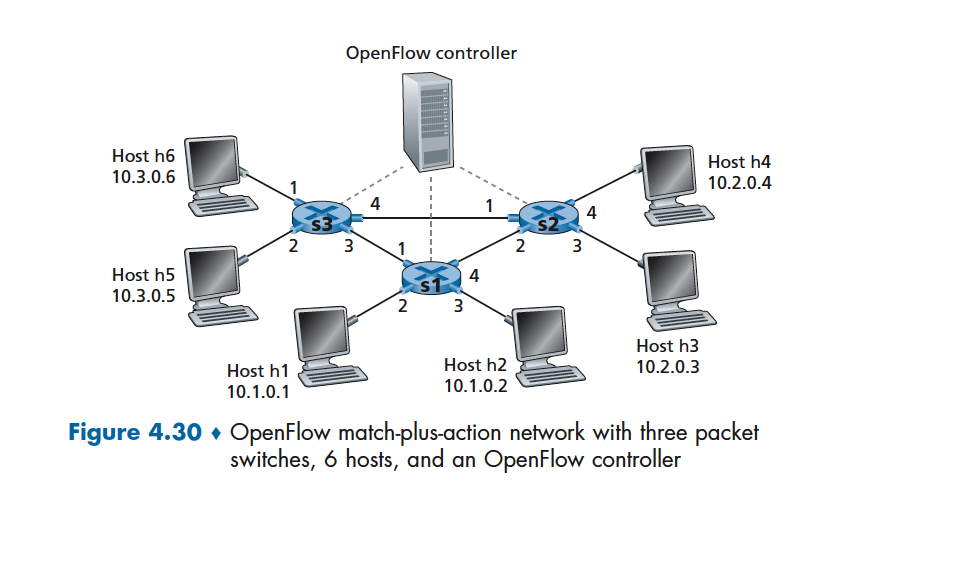Question
Consider the IP address 130.253.191.46: (a) What is the binary representation of the address? (b) What is the subnet mask assuming that this address is
Consider the IP address 130.253.191.46: (a) What is the binary representation of the address? (b) What is the subnet mask assuming that this address is part of a /16 subnet? (c) How many IP addresses are available in this range?
2. Imagine a (hypothetical) IPv4.1, as an alternative to IPv6, that uses 8 bytes for each address. (a) How many IP addresses are possible in IPv4.1? (b) How many more IP addresses are there in IPv4.1 than in traditional IPv4? (c) How many more IP addresses are there in IPv6 than in IPv4.1?
3. Assume a home wireless network (where the router uses NAT), with a total of 5 devices sharing the wireless connection. Further, assume that the address range used by the wireless access point gives out addresses (using DHCP) in the range 192.168.101.0/24 sequentially. (a) How many IP addresses are possible on this home network? (b) What are likely the addresses of the fiv devices? (c) How many IP addresses are in use out of the listed range on the network? (don't forget that any layer-3 the device needs an IP address)
(d) If the NAT uses port 50000 as the initial port for translation (and increments this by 1 for each connection), and three separate connections to 157.89.71.48 on port 80 are made by three separate clients on the network (with source ports 22022, 33033 and 44044, respectively), show one example of the possible entries in the NAT's forwarding table.
4. Given a CIDR range of 131.253.160.0/20: (a) What is the subnet mask of this range? (b) What are the "highest" and "lowest" IP addresses in this range?
5. Assume an ISP has the CIDR range of addresses in 141.57.62.0/26. Assume that all addresses in a range are available (e.g., the lowest and highest IP in range are not excluded!) (a) If the ISP has 6 customers, is it possible to allocate each customer an equal number of IP addresses? (b) Now assume the ISP has 8 customers and again wants to provide each with an equal number of IP addresses? Is this possible? (c) For the previous two parts, if possible to equally allocate addresses, what are the ranges (in CIDR notation) for each? How many IP addresses would each customer get for each? 6. Refer to Figure 4.30 in the textbook (page 359 in the seventh edition, 357 in the eigth edition) and answer the following questions. (a) Provide flow table notation rules (as in the book), specifying each router required and their according rules, for making traffic from Host h3 destined for Host h6 traverse all three routers. (b) Now assume that traffic on port 443 between hosts h4 and h6 should never go through router s1, but traffic on port 25 must go through router s1. Show the forwarding rules for routers s1, s2 and s3 to make this happen. (c) Using SDN flow rules, is it possible to make traffic from h1 to h2 follow this path h1?> s1?> s2?> s3?> s1?> h2? What rules are required (if it is indeed possible) for this? (d) Assuming the same requirements as in the previous part, is it possible to use traditional destination-based forwarding rules? Why or why not?

Host h6 10.3.0.6 Host h5 10.3.0.5 OpenFlow controller 2 3 Host h1 10.1.0.1 4 1 2 3 4 1 Host h2 10.1.0.2 2 3 4 Host h3 10.2.0.3 Host h4 10.2.0.4 Figure 4.30 OpenFlow match-plus-action network with three packet switches, 6 hosts, and an OpenFlow controller
Step by Step Solution
There are 3 Steps involved in it
Step: 1

Get Instant Access to Expert-Tailored Solutions
See step-by-step solutions with expert insights and AI powered tools for academic success
Step: 2

Step: 3

Ace Your Homework with AI
Get the answers you need in no time with our AI-driven, step-by-step assistance
Get Started


